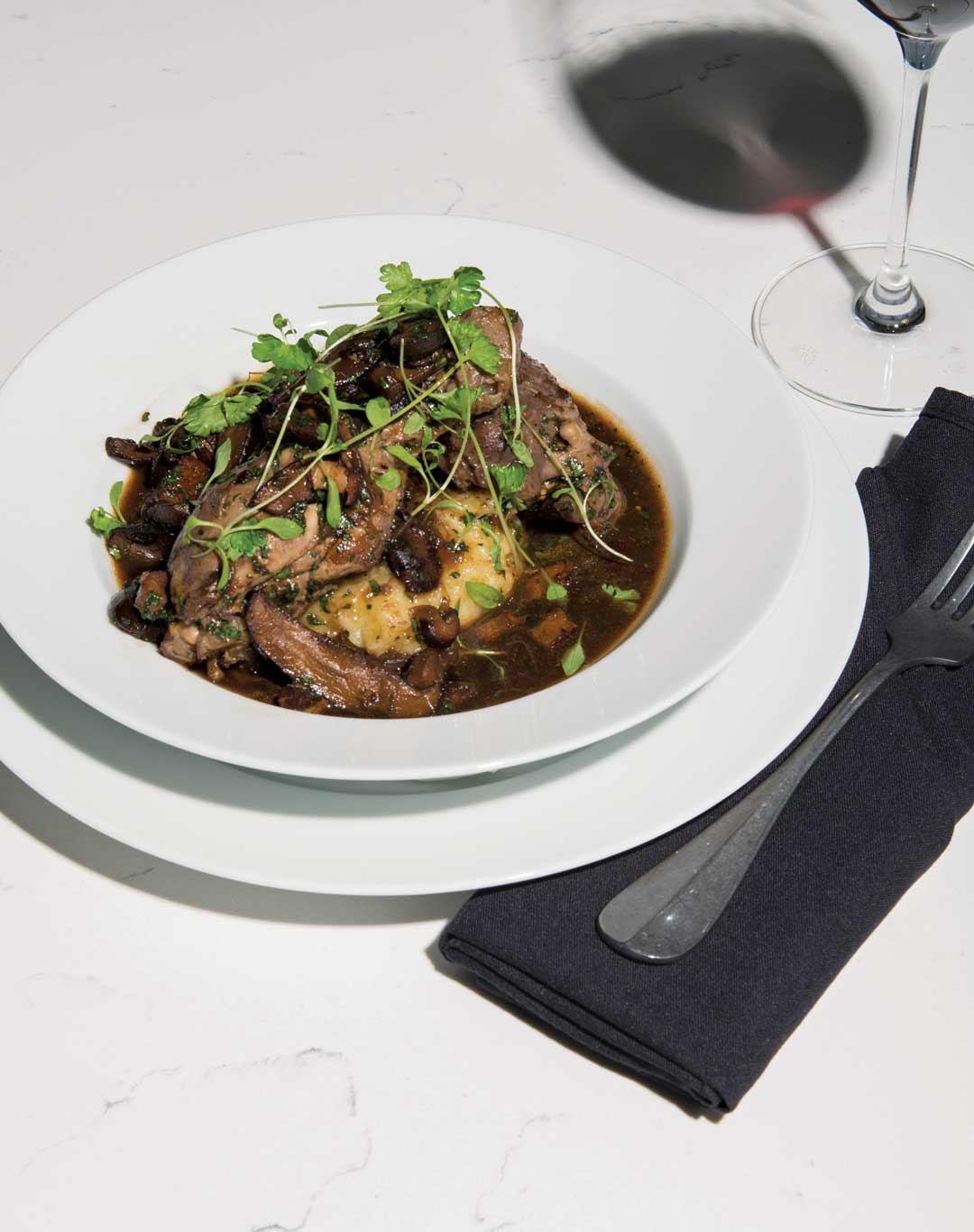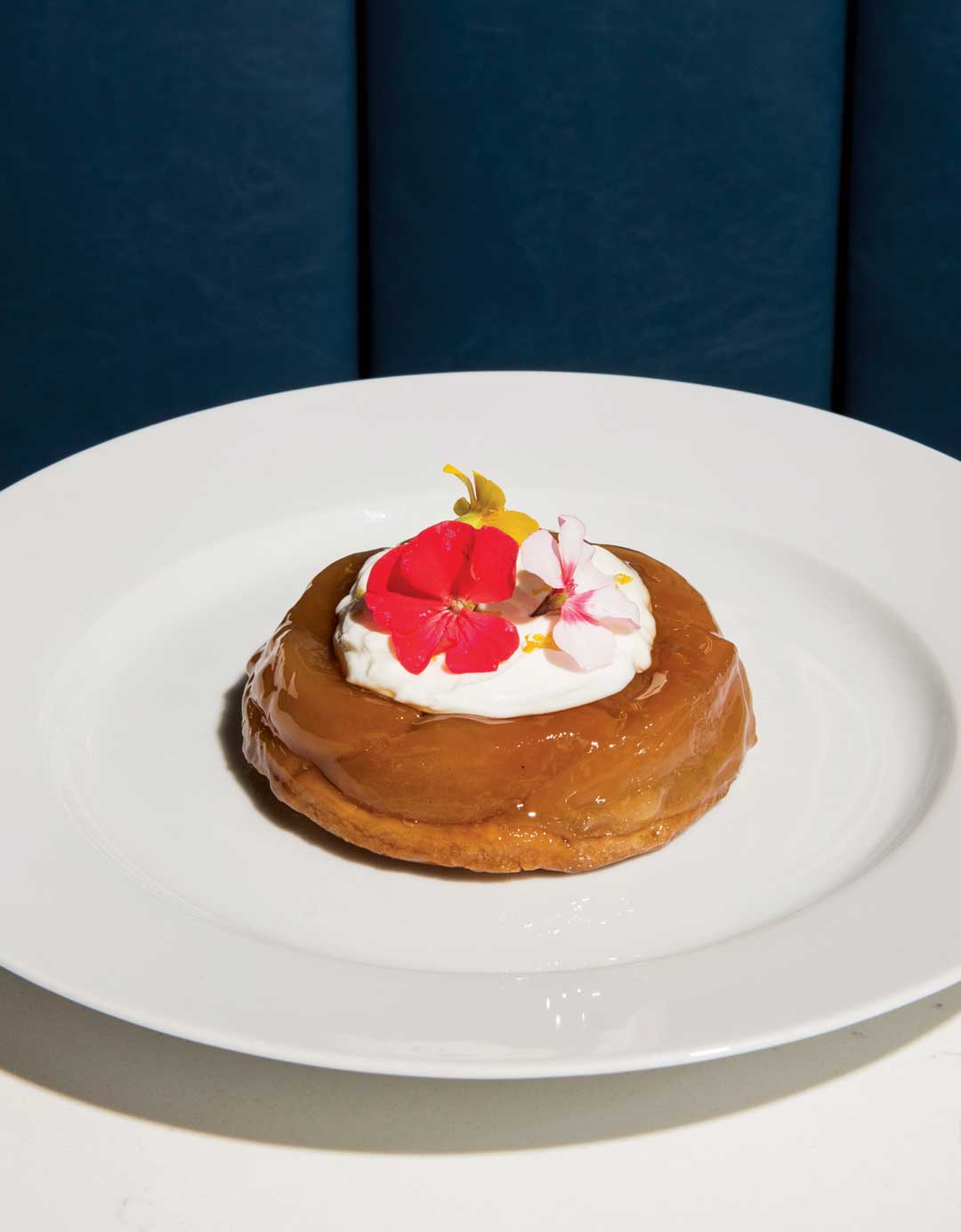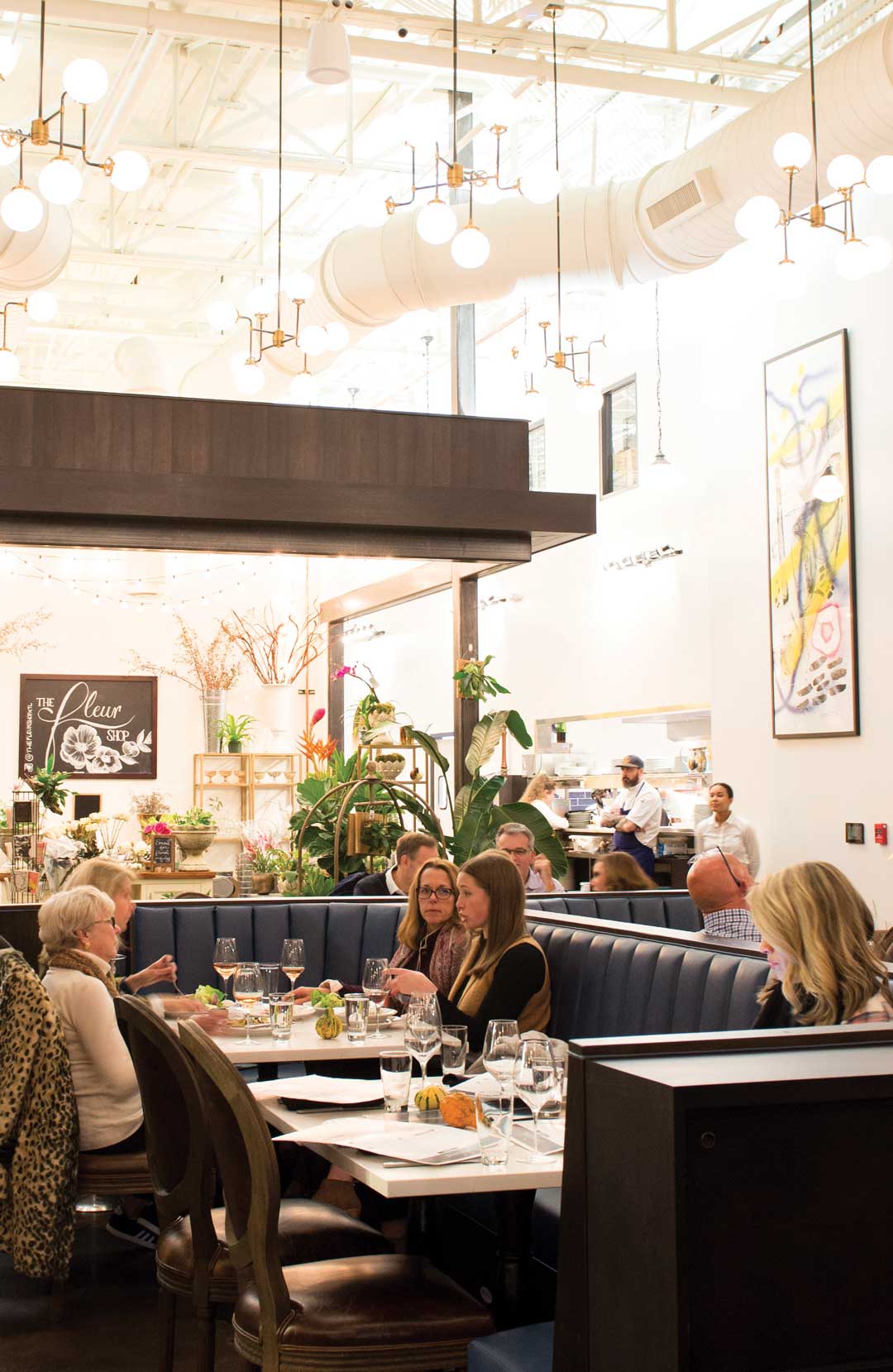
Photograph by Caroline C. Kilgore
The jaw-dropping Bazati development—one of the newest multipurpose destinations along the BeltLine—hides behind the Telephone Factory lofts in a complex of old warehouses from the 1940s. Sandwiched between the Eastside Trail and acres of parking with darting valets, the compound derives its name from an old Serbo-Croatian verb distantly related to the word “bazaar,” which means “hanging out.” Bazati’s grand space includes fancy boutiques—Taschen library shop, a Monocle outpost, a garden shop, several artisanal stalls—and two restaurants: a rooftop Latin bar called Estrella and, on the main floor, a proper French brasserie unimaginatively named the Brasserie.
What is a brasserie, you may be wondering, and how is it different from a bistro, a cafe, or any other place to eat? The term no longer means “an establishment that brews its own beer,” as it originally did, during the Belle Epoque, when Alsatian brewers popularized brasseries in Paris. But you can expect a brasserie to have a few taps, stay open all day, and serve classic and relatively affordable food in an environment that is egalitarian yet somehow exciting. In France, there is a difference between a grande brasserie, such as La Coupole, that serves fancy crustaceans and choucroute royale, and more modest neighborhood establishments slamming plates of jambon beurre on baguette onto tables set without linen.
Big in scale but modest about its menu, the Brasserie is a hybrid of those two styles—and is remarkably convincing as an authentically French concept.
THE TEAM
Chef Rémi Granger, who for the last few years distinguished himself at Gunshow, Revival, and, most recently, Bread and Butterfly, has an advantage over others who’ve been trying to invigorate French cuisine in Atlanta: He’s actually French. Born into a farming and winemaking family in the hillside town of Blois in the Loire Valley, he started cooking at 15, went to culinary school in his hometown, and eventually decided to travel to the U.S. The trip ended up being an extensive and productive one. After cooking in a renegade style at Gunshow, tackling high-end Southern at Revival, and returning to straightforward French at Bread & Butterfly, he is ready to embrace a new persona as a standard bearer for the old-fashioned food of his motherland. Unfortunately, the rest of the cast at the Brasserie hasn’t begun to coalesce; the service can be patchy and sometimes ignorant of all things French. Hopefully, Granger will find the backup he needs to accomplish his goal to be, in his own words, “the best French chef in town.”

Photograph by Caroline C. Kilgore
THE FOOD
Traditional dishes such as a thick slab of unctuous mi-cuit foie gras with quince compote, lively escargots with maitre d’hotel butter, rillettes de porc (aka “pig jam”) properly served at room temperature, and a nicely reduced but sometimes salty coq au vin with pearl onions and cremini mushrooms on a thin stratum of pommes puree are textbook presentations. The duck confit may not have spent a lot of time mellowing in salted duck fat, but it has a dashing freshness. Granger’s haricots verts with black garlic puree, his lentil salad glistening like caviar in mustard vinaigrette, and his simply dressed green salad identify him as a Frenchman. Every so often, you’ll encounter something jarring (moules and frites served in the same bowl, underbaked quiche du jour) or merely boring (anemic croque-madame with barely enough cheese), but confidence is quickly restored thanks to a pissaladiere (a sort of Niçoise sauceless pizza topped with caramelized onions, black olives, and, in this case, anchovies). Even the brunch, often a money-squeezing afterthought for a restaurant, is a delight, with standouts such as supple blond cheese omelets, loose scrambled eggs served with creme fraiche and a minuscule amount of French caviar, and a superlative jambon beurre sandwich with cornichons.
THE DRINKS
A Kir Royale, made with creme de cassis and a cremant from the Loire Valley instead of the usual Champagne, and an interesting selection of wines from Alsace are the highlights of an expensive and horrendously misspelled beverage list that also includes other European wines. Often, there is no one behind the bar who knows much about the inventory. Leffe on tap seems like a safer bet, or you can sip vermouth over an ice cube as one would during the French aperitif hour.

Photograph by Caroline C. Kilgore
THE VIBE
The mishmash of hotel-ish furniture, the super-bright lighting, and the sky-high ceiling do little to offset the fact that this is a room in a warehouse. But the gorgeous terrace overlooking the BeltLine salvages the mood—especially if you’re into people-watching and want to look at something other than a staff that can be bumbling and untidy.
THE VERDICT
What’s not to love about a day-and-night, BeltLine-adjacent restaurant that’s serious about traditional French cooking? Chef Rémi Granger’s food is that of a true Frenchman, and the Brasserie’s idyllic patio suits his classic style. But the restaurant’s indoor dining room, wait staff, and bar program need polishing. Hopefully, the restaurant will mature into a place that better reflects Granger’s vision.
Rating
★ ★ ★ ★
(Very Good)
Vital stats
550 Somerset Terrace
404-795-8342
bazatiatl.com/brasserie
This article appears in our January 2019 issue.









![The North Carolina Museum of Natural Sciences’ newest exhibit is a [pre]historic first](https://cdn2.atlantamagazine.com/wp-content/uploads/sites/4/2024/04/DD-3-100x70.jpg)



